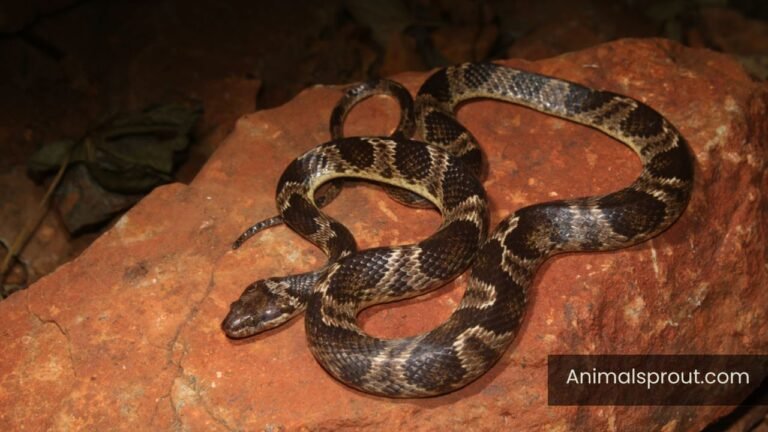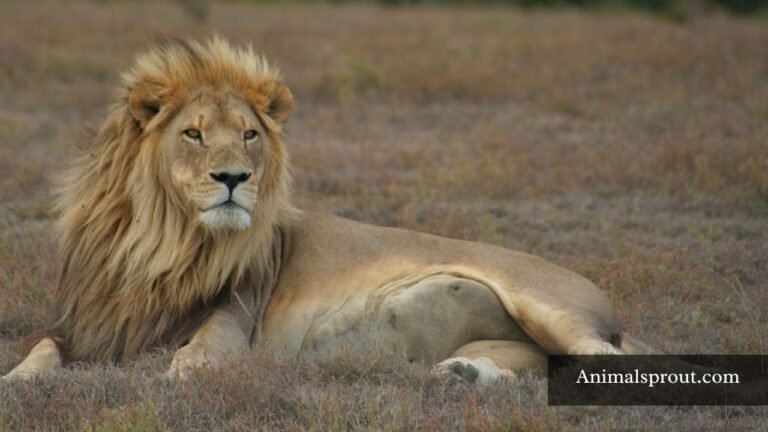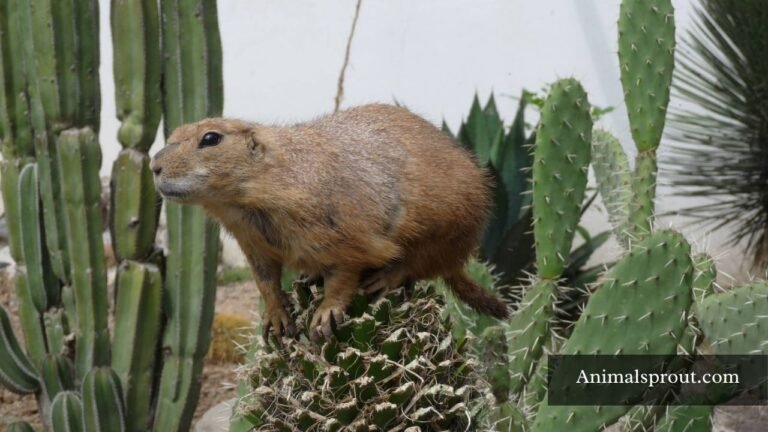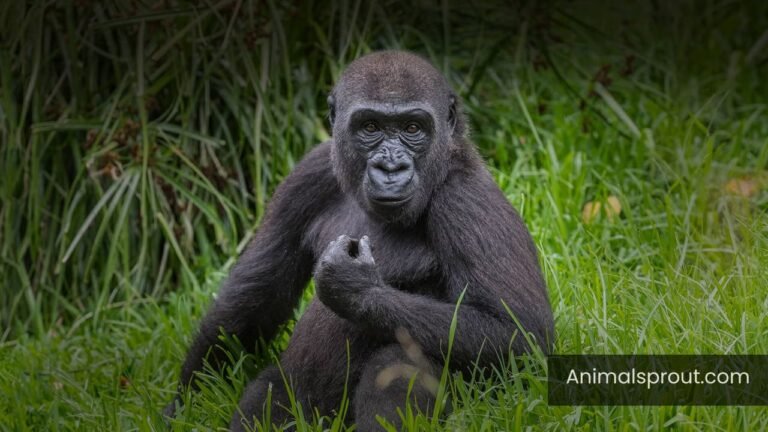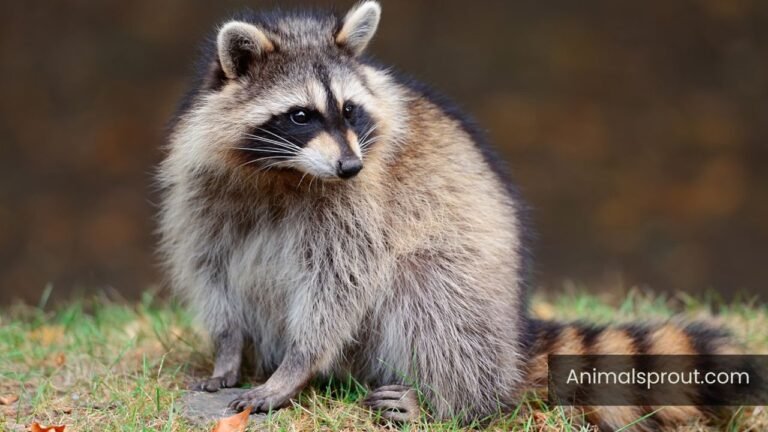Top 18 Most Greedy Animals In The World (With Pictures)
Did you know that some animals will consume up to 20% of their body weight in a single meal? This staggering fact sets the stage for our exploration of the Most Greedy Animals in the animal kingdom. Understanding these creatures not only highlights the fascinating dynamics of survival but also reveals how greed manifests in nature. In this article, we’ll uncover the top contenders for the title of “Most Greedy Animals” and what their eating habits can teach us about adaptation and resource competition.
List Of Most Greedy Animals In The World
Here is the list of animals that are greedy:
| 1 | Squirrels |
| 2 | Pigeons |
| 3 | Hamsters |
| 4 | Brown Bears |
| 5 | Pigs |
| 6 | Hyenas |
| 7 | Gorillas |
| 8 | Foxes |
| 9 | Tiger Sharks |
| 10 | Tasmanian Devils |
| 11 | Pufferfish |
| 12 | Puffins |
| 13 | American Pygmy Shrews |
| 14 | Seagulls |
| 15 | Chimpanzees |
| 16 | Raccoons |
| 17 | Honey Badgers |
| 18 | Burmese Python |
Squirrels
Scientific Name: Sciuridae
Class: Mammalia
Diet: Omnivore
Squirrels are often portrayed as the quintessential image of greed in the animal kingdom, tirelessly hoarding acorns and nuts in preparation for winter. However, this behavior is not merely about self-preservation; it reveals a fascinating aspect of their intelligence and adaptability. Studies have shown that squirrels engage in a behavior called “caching,” where they bury food in various locations. This not only ensures a food supply during lean months but also promotes forest growth, as forgotten seeds can sprout into new trees.

Moreover, their so-called greed plays a crucial role in the ecosystem. By dispersing seeds through their hoarding habits, squirrels contribute to biodiversity and forest regeneration. This intricate dance between survival and environmental stewardship challenges the notion of greed as purely selfish behavior. Observing these agile creatures, one can’t help but appreciate the delicate balance they maintain—navigating their own needs while inadvertently nurturing the world around them.
Pigeons
Scientific Name: Columbidae
Class: Aves
Diet: Omnivore
Pigeons, often dismissed as mere urban nuisances, possess a remarkable intelligence that belies their reputation. These adaptable birds have developed intricate social structures and communication systems, allowing them to thrive in bustling city environments. Their ability to recognize themselves in mirrors—a trait shared by only a few animal species—speaks volumes about their cognitive capabilities. Observing a group of pigeons pecking at crumbs, one might think they are solely driven by hunger, but there’s more at play; they engage in complex social interactions, negotiating pecking order and territory as they forage.
Pigeons exhibit an impressive memory for faces and locations, which aids them in navigating vast urban landscapes. This unique skill set not only helps them find food but also enables them to avoid potential predators. Researchers have shown that pigeons can even learn abstract concepts like numerical values and patterns, demonstrating a level of problem-solving that challenges our understanding of avian intelligence.
Hamsters
Scientific Name: Cricetinae
Class: Mammalia
Diet: Omnivore
Hamsters, those pint-sized bundles of fur, are often characterized as adorable and playful pets, but their greedy tendencies reveal a fascinating side to their behavior. These little creatures have an innate instinct to hoard food, a trait that harks back to their wild ancestors who needed to store provisions for harsher seasons. Observing a hamster meticulously stashing away sunflower seeds or bits of carrot in the nooks of their habitat offers a glimpse into their resourceful nature. This behavior not only serves a practical purpose but also adds layers to their personality, highlighting their intelligence and adaptability.
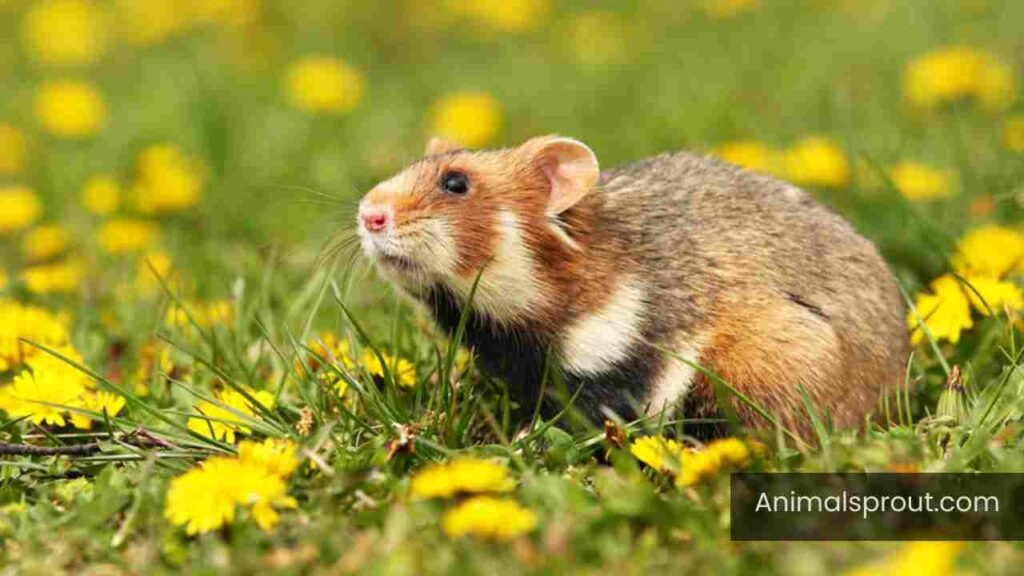
Interestingly, this greediness isn’t merely about survival; it reflects a deeper psychological drive. Hamsters engage in food caching as a way to cope with stress and boredom. In captivity, where they may lack the environmental stimuli of their natural habitats, the act of collecting and storing food can serve as a form of enrichment. Providing your hamster with varied treats encourages this instinctual behavior, promoting physical activity and mental engagement. So, the next time you watch your furry friend hoarding their favorite snacks, remember that behind this seemingly simple act lies a rich tapestry of evolutionary wisdom and emotional fulfillment.
Brown Bears
Scientific Name: Ursus arctos
Class: Mammalia
Diet: Omnivorous
Brown bears, often celebrated for their majestic presence in the wild, exhibit a fascinating duality in their behavior that speaks to both their survival instincts and their voracious appetites. As omnivores, these formidable creatures are not just opportunistic feeders; they are strategic foragers, capitalizing on seasonal food sources to bulk up for hibernation. In the summer months, when salmon run upstream to spawn, brown bears can be seen engaging in an almost balletic display of power and precision, catching fish with incredible skill. This seasonal feast is crucial, as it allows them to amass fat reserves that sustain them through the harsh winters when food is scarce.
However, this seemingly insatiable hunger goes beyond mere survival; it showcases their role as keystone species in their ecosystems. By consuming vast quantities of salmon and other prey, brown bears inadvertently facilitate nutrient cycling within their habitats. Their scat acts as a natural fertilizer, enriching the soil and promoting plant growth, which in turn supports a diverse array of wildlife. This interconnectedness highlights a deeper narrative: the greedy nature of brown bears is not just about self-preservation but also about nurturing the very environment that sustains them and countless other species. In this light, their appetite becomes a vital force for ecological balance, reminding us that even the most seemingly selfish instincts can lead to profound benefits for the wider world.
Pigs
Scientific Name: Sus scrofa domesticus
Class: Mammalia
Diet: Omnivore
Pigs, often seen as the epitome of greed in the animal kingdom, offer a fascinating glimpse into the complexities of their behavior. While they are renowned for their insatiable appetites, this characteristic is more than mere gluttony; it reflects their incredible adaptability and intelligence. Pigs possess an innate ability to forage and explore their environment, showcasing a remarkable cognitive skill set that rivals that of dogs and even primates. Their snouts, equipped with sensitive bristles, allow them to unearth hidden treasures of roots, insects, and other edibles, turning every meal into an adventurous quest.

Moreover, pigs display a social structure that adds depth to their seemingly greedy nature. In the wild, they form close-knit groups where cooperation and communication thrive. This social dynamic fosters sharing behaviors, challenging the stereotype of solitary hoarding. When one pig discovers a food source, others often join in, creating a communal atmosphere rather than a competitive feeding frenzy. Through this lens, what appears to be greed transforms into a survival strategy that emphasizes intelligence and community—fascinating traits that invite us to reconsider how we define appetite and social behavior in the animal world.
Readmore: Explore Top 17 Anxious Animals In The World.
Hyenas
Scientific Name: Hyaenidae
Class: Mammalia
Diet: Carnivore
Hyenas, often misunderstood as mere scavengers, showcase a level of resourcefulness that rivals many apex predators. With their powerful jaws and incredible stamina, these creatures epitomize the phrase “waste not, want not.” Their unique social structures, particularly in spotted hyena clans, highlight a communal approach to feeding that maximizes efficiency in resource use. While they are notorious for their cackling laughter, this vocalization serves a crucial purpose in coordinating hunts and alerting clan members to food sources, demonstrating their intelligence and social complexity.
Hyenas possess an impressive digestive system that allows them to consume nearly every part of their prey, including bones and hooves, which many other carnivores cannot process. This ability not only minimizes waste but also allows them to thrive in environments where food is scarce. In ecosystems where competition for resources is fierce, hyenas’ adaptability and opportunistic feeding habits underscore their role as both hunters and recyclers of nature’s bounty. Their reputation as greedy scavengers often overshadows their critical contribution to maintaining ecological balance, reminding us that survival often requires a blend of cunning and community.
Gorillas
Scientific Name: Gorilla
Class: Mammalia
Diet: Herbivore
Gorillas, often perceived as gentle giants, reveal a surprising side when it comes to their feeding habits. These remarkable primates have an insatiable appetite for the lush foliage of their forest homes, consuming up to 40 pounds of vegetation daily. Their diet predominantly consists of leaves, stems, and fruits, yet they exhibit a fascinating behavior: selective foraging. This means that while they can devour vast amounts of food, they often choose only the most nutrient-rich and palatable options available, showcasing a keen awareness of their dietary needs.

Interestingly, this “greed” is not merely about consumption; it’s a strategic survival tactic. In the wild, where food availability fluctuates with the seasons, gorillas’ ability to efficiently locate and consume high-quality resources ensures their health and vitality. Their social structures also play a role in this feeding frenzy; dominant males often secure access to prime foraging spots, while younger members learn from these behaviors, ensuring the entire troop thrives.
Foxes
Scientific Name: Vulpes
Class: Mammalia
Diet: Omnivore
Foxes, often romanticized as cunning tricksters in folklore, embody a unique blend of intelligence and opportunism that marks them as some of the most greedy animals in the wild. Unlike many predators that rely on a singular hunting strategy, foxes are notorious for their adaptability. They will scavenge through human refuse, pilfer from bird nests, and even steal from other predators, showcasing a remarkable resourcefulness that goes beyond mere survival. This omnivorous diet allows them to exploit various food sources, making them adept at thriving in diverse environments.
What truly sets foxes apart is their impressive ability to maximize their foraging efficiency. They have been observed engaging in “cache behavior,” where they bury excess food to consume later, revealing an instinctual understanding of scarcity and abundance. This behavior not only highlights their greed but also their foresight—ensuring that they have sustenance during leaner times. In urban settings, their opportunistic nature becomes even more pronounced; they’ve been known to raid gardens and picnic areas, demonstrating a certain boldness that reflects their cunning and adaptability. As we watch these clever creatures navigate both natural and human-altered landscapes, it’s clear that their greed is not just a flaw but a fascinating aspect of their survival strategy.
Related article: Why do Foxes Laugh?
Tiger Sharks
Scientific Name: Galeocerdo cuvier
Class: Fish
Diet: Carnivore
Tiger sharks are often dubbed the “garbage cans of the sea,” a title that reflects their remarkably indiscriminate eating habits. Unlike many other predators, these formidable hunters have a diet that spans an astonishing range of items, from fish and seals to discarded debris like tires and even license plates. This eclectic appetite is not just a quirk; it highlights their adaptability in an ever-changing marine environment. While most predators tend to specialize, tiger sharks thrive by embracing a buffet of options, showcasing a fascinating survival strategy.

Their greediness is not merely about quantity but also speaks to their role in the ecosystem. By consuming a variety of prey, they help maintain the balance within their habitats, controlling populations and contributing to the health of marine ecosystems.
Tasmanian Devils
Scientific Name: Sarcophilus harrisii
Class: Mammalia
Diet: Carnivore
Tasmanian devils, with their ravenous appetites and unique feeding behaviors, showcase an extraordinary aspect of nature’s survival instincts. These carnivorous marsupials are renowned for their voracious feeding habits, often consuming up to 40% of their body weight in a single meal. This insatiable hunger is not merely a quirk; it stems from their role as scavengers in the ecosystem. By feasting on carrion, they help maintain ecological balance, ensuring that dead animals do not pile up and spread disease.
What sets the Tasmanian devil apart is not just their greed but their remarkable efficiency in eating. They possess powerful jaws and teeth designed to crush bones and consume every part of their prey, leaving little behind. This behavior has earned them the title of nature’s cleanup crew, and it’s fascinating to observe how their feasting rituals contribute to nutrient recycling within their habitat.
Pufferfish
Scientific Name: Tetraodontidae
Class: Actinopterygii
Diet: Omnivorous
The pufferfish, often celebrated for its unique defense mechanism of inflating into a spiky ball, also harbors a surprisingly insatiable appetite that can be quite the spectacle. These marine wonders possess an extraordinary ability to consume vast quantities of food, often ingesting prey far larger than their mouths would suggest possible. This gluttonous behavior isn’t just a quirk; it plays a crucial role in their survival. By devouring everything from crustaceans to algae, pufferfish help maintain the delicate balance of their underwater ecosystems, controlling populations of potential overgrazers and ensuring the health of coral reefs.
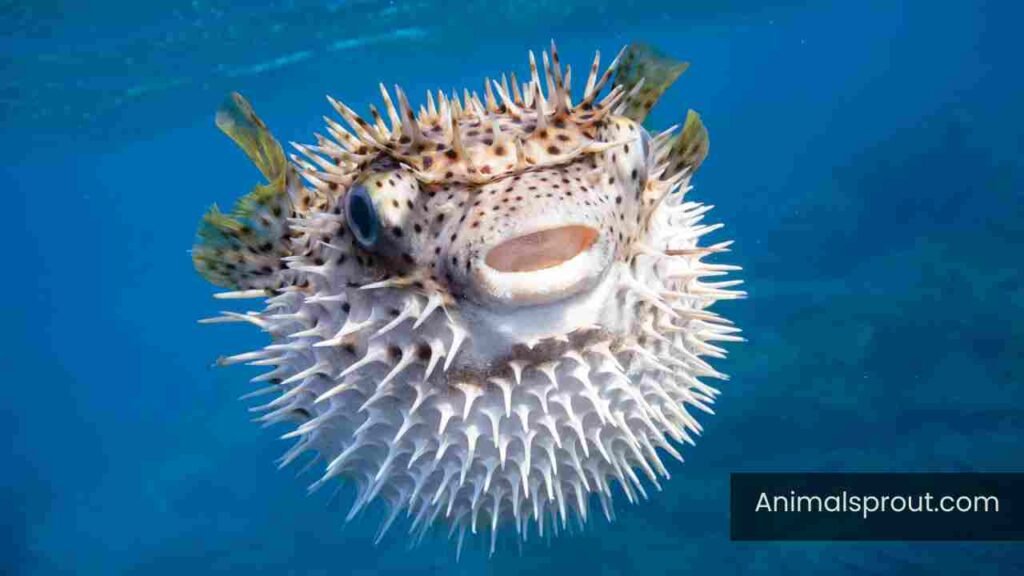
Their voracious feeding habits are not solely driven by hunger but also by a complex interaction with their environment. Pufferfish are known to exhibit selective feeding behaviors, choosing specific prey that contributes to their toxic defenses. The toxins they accumulate from certain foods serve as a deterrent against predators, making them both greedy and cunning. This remarkable strategy highlights a fascinating aspect of their biology—while they may appear greedy, their eating habits are intricately tied to survival and adaptation.
Readmore: Explore Top 7 Humble Animals In The World.
Puffins
Scientific Name: Fratercula
Class: Aves
Diet: Carnivore
Puffins, often dubbed the “clowns of the sea,” exhibit a fascinating blend of charm and cunning when it comes to their eating habits. These vibrant birds have a remarkable ability to carry multiple fish in their beaks at once, with some individuals known to transport as many as 10 small fish simultaneously. This impressive feat isn’t merely for show; it’s a strategic adaptation that allows them to maximize their foraging efficiency. With their specialized jaw structure, puffins can deftly hold onto slippery prey while diving underwater, showcasing an almost greedy determination to secure enough sustenance for themselves and their chicks.
Yet, this behavior transcends mere gluttony; it reflects a deeper survival strategy. Puffins face intense competition from other seabirds and predators, which drives them to exploit every opportunity to gather food. Their seemingly insatiable appetite is not just about immediate gratification but a calculated response to the harsh realities of their environment. By hoarding fish in their beaks, they reduce the number of trips needed to feed their young, ensuring that their chicks receive adequate nutrition in the short window they have to grow before facing the perils of the wild.
American Pygmy Shrews
Scientific Name: Sorex hoyi Baird
Class: Mammalia
Diet: Insectivore
The American pygmy shrew, despite its diminutive size—often no larger than a penny—exemplifies an astonishing appetite that belies its stature. These tiny creatures have a metabolism so rapid that they must consume nearly their body weight in food every day just to sustain themselves. This relentless pursuit of sustenance is driven by their need for energy; the shrews can only survive a few hours without feeding. Their diet primarily consists of insects, worms, and other small invertebrates, but they are also known to indulge in the occasional fruit or plant matter when the opportunity arises.

What’s particularly fascinating about the American pygmy shrew is not just their voracious appetite, but the ecological role they play in their environment. By consuming vast quantities of insects, they help regulate pest populations, contributing to the balance of their ecosystems. Their constant foraging behavior also aerates the soil, which promotes healthier plant growth. In this way, the pygmy shrew embodies the delicate interplay between survival instincts and ecological contribution, reminding us that even the smallest of creatures can have an outsized impact on their surroundings.
Seagulls
Scientific Name: Larinae
Class: Aves
Diet: Omnivores
Seagulls have earned their reputation as the quintessential scavengers of the animal kingdom, showcasing a remarkable adaptability that underscores their greedy nature. These birds, often seen swooping down on unsuspecting beachgoers or raiding picnics, possess an innate cunning that belies their seemingly carefree demeanor. Their opportunistic feeding habits are not merely a quest for sustenance; they are a masterclass in survival strategy. In urban environments, seagulls have learned to exploit human behavior, turning bustling city streets into their personal buffet tables.
What sets seagulls apart is their social intelligence; they often work in groups to intimidate competitors and snatch food from one another. This collective approach amplifies their greedy tendencies, as they can outmaneuver and outsmart smaller birds. Moreover, their impressive vocalizations serve not just as communication but also as a means to establish dominance over their territory and food sources. Observing a flock of seagulls in action reveals a fascinating interplay of instinct, resourcefulness, and sheer audacity, reminding us that greed in the animal world can be a powerful force for survival and adaptation.
Chimpanzees
Scientific Name: Pan troglodytes
Class: Mammalia
Diet: Omnivorous
Chimpanzees are often labeled as the most greedy animals in the wild, not just for their voracious appetites but for their cunning strategies in acquiring food. These intelligent primates have been observed hoarding resources, meticulously storing nuts and fruits in various locations to ensure a future supply. This behavior isn’t merely about survival; it reflects their advanced cognitive abilities, as they can remember the locations of their hidden treasures long after they’ve been stashed away. Their greed manifests in social dynamics, too, as they engage in complex interactions to manipulate others into sharing or stealing food.

Interestingly, chimpanzees don’t just compete for food; they also demonstrate a remarkable understanding of fairness and reciprocity. Research shows that they often share food with allies, but only if it serves their self-interest. This balancing act between greed and social strategy reveals a deeper layer of their behavior—one that highlights their ability to navigate complex social networks while pursuing personal gain.
Also read: Top 18 Animals With Lowest IQ In The World.
Raccoons
Scientific Name: Procyon lotor
Class: Mammalia
Diet: Omnivores
Raccoons, often dubbed the “bandits of the night,” exhibit a unique blend of intelligence and opportunism that sets them apart in the animal kingdom. With their dexterous front paws and remarkable problem-solving skills, these creatures have evolved to thrive in urban environments, scavenging for food with an audacity that is both impressive and entertaining. Their ability to open containers and navigate complex obstacles reveals not just their physical prowess but also a cunning awareness of their surroundings, making them adept at exploiting human habitats for a feast.
What makes raccoons particularly fascinating is their social behavior around food. They often forage in groups, showcasing a level of cooperation that enhances their chances of finding a meal. This communal approach can lead to remarkable scenes where they work together to overturn trash bins or raid bird feeders, all while maintaining an air of mischievous charm. Their insatiable appetite for variety—ranging from fruits and insects to discarded fast food—demonstrates not only their adaptability but also a certain zest for life that captivates observers.
Honey Badgers
Scientific Name: Mellivora capensis
Class: Mammalia
Diet: Omnivores
Honey badgers are renowned for their relentless pursuit of food, embodying a unique blend of audacity and insatiable greed that sets them apart in the animal kingdom. These small yet fearless creatures are not deterred by the size or venom of their prey; they tackle formidable opponents, including snakes and even larger mammals, with an unparalleled tenacity. Their reputation as “the most fearless animal” is well-earned, as honey badgers display a remarkable ability to withstand pain and recover from injuries, all for the sake of a meal.

What truly elevates the honey badger’s greedy persona is its voracious appetite for variety. Their diet spans from fruits and insects to small mammals and birds, showcasing an adaptability that few other species possess. This omnivorous diet not only fuels their adventurous spirit but also highlights their role as opportunistic foragers in their ecosystems.
Burmese Python
Scientific Name: Python bivittatus
Class: Reptilia
Diet: Carnivorous
The Burmese python, a remarkable reptile native to Southeast Asia, embodies a fascinating blend of beauty and voracity. With the potential to grow over 20 feet long and weigh more than 200 pounds, this constrictor is not just impressive in size but also in its insatiable appetite. Unlike many other predators, which often hunt out of necessity, the Burmese python exhibits a unique form of greed; it consumes prey that can be disproportionate to its own body mass. This ability to tackle large animals—ranging from birds to deer—highlights its role as an apex predator in its habitat.
What sets the Burmese python apart is its extraordinary capacity for digestion. After consuming a meal, it can go weeks or even months without eating again, showcasing a feast-or-famine strategy that maximizes energy intake. This reptilian greed isn’t merely a survival tactic; it reflects an evolutionary adaptation that allows it to thrive in diverse environments. However, this same voraciousness has led to significant ecological consequences in regions where they have become invasive, such as the Florida Everglades. Here, their unchecked appetite poses a threat to local wildlife, revealing the dark side of their greed—an insatiable hunger that can disrupt entire ecosystems.
Readmore: Explore most Energetic Animals In The World.
Final Words
The most greedy animals exhibit behaviors that are both intriguing and essential for their survival. Their relentless pursuit of food serves as a testament to the harsh realities of life in the wild, where every meal counts. Whether it’s the industrious ant or the opportunistic raccoon, these creatures demonstrate that greed can take many forms and strategies.
By studying their actions, we gain valuable insights into nature’s complexities and the need for a balanced ecosystem. As we observe these greedy animals, let us strive to foster a greater understanding and respect for wildlife, encouraging sustainable practices that benefit both them and our environment.
FAQs
Why are animals so greedy?
Animals are often perceived as greedy when they exhibit behaviors that seem to prioritize their own needs, such as hoarding food or aggressively competing for resources. However, this behavior is typically driven by instinct and survival rather than a conscious desire to be greedy. In the wild, animals must constantly compete for limited resources like food, water, and shelter. Those that successfully gather and store resources are more likely to survive during lean times, leading to the impression of greed.
What is the most greedy animal?
When it comes to greediness in the animal kingdom, the common raccoon often stands out due to its notorious behavior of scavenging and hoarding food. These clever creatures are known for their dexterous paws and problem-solving skills, which they use to access garbage cans, bird feeders, and even pet food left outdoors. Raccoons have a reputation for taking more than they need, often pilfering food from other animals and stashing away leftovers for later. Their insatiable appetite and tendency to raid human trash make them a prime example of greediness in the wild.
What animals are always hungry?
Many animals exhibit behaviors that can make them seem perpetually hungry, largely due to their natural instincts and dietary needs. For example, creatures like the hummingbird and koala are often described as always seeking food. Hummingbirds have incredibly high metabolism rates, requiring them to consume nectar multiple times an hour to sustain their energy levels. Similarly, koalas, which primarily eat eucalyptus leaves, need to consume large quantities daily to meet their nutritional requirements, leading them to spend a significant portion of their day foraging.



